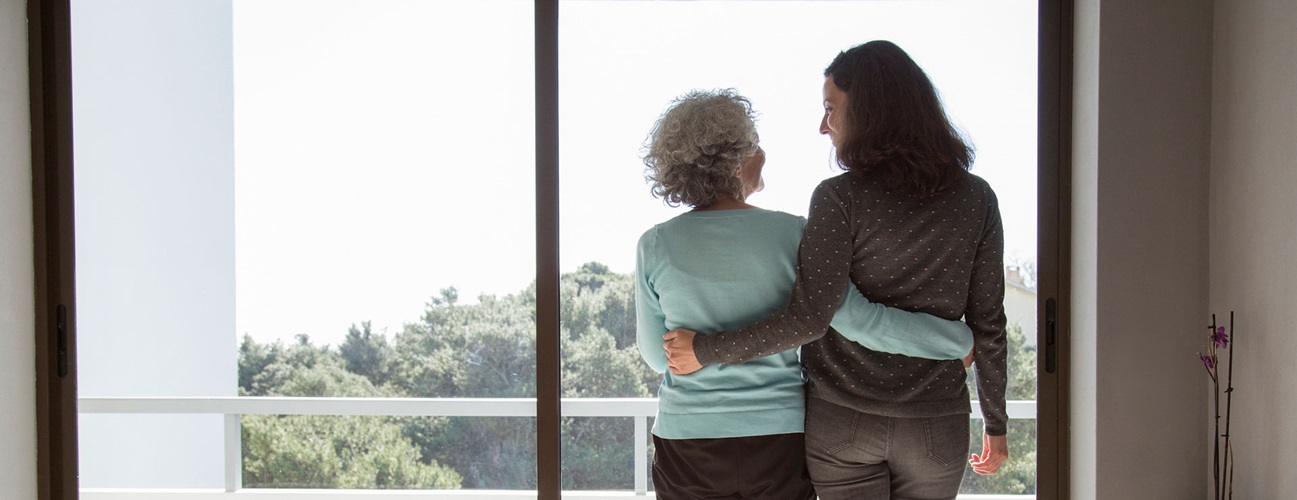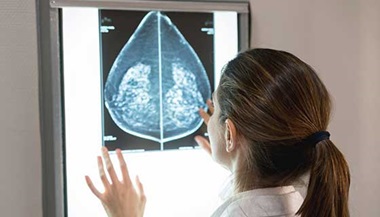Hereditary Breast Cancer
Featured Expert:
There is no doubt that some forms of breast cancer can run in families. But just because one of your relatives had breast cancer does not mean you, too, are destined to develop it. At the same time, if you are at risk, continual monitoring and screening is important so your doctor can catch and treat any breast cancer that may arise as early as possible.
Anisha Ninan, of the Breast Cancer Program at the Johns Hopkins Kimmel Cancer Center, helps you understand the risk of hereditary breast cancer and how to work with your doctor to stay healthier.
What You Need to Know
- About 10% of breast cancers are related to inheritance of damaged genes, including breast cancer (BRCA) genes.
- In addition to BRCA1 and BRCA2, other genes are associated with increased cancer risk, such as: PALB2, ATM, CHEK2, CDH1, STK11, PTEN, TP53 and NF1.
- If you have inherited a damaged gene, the risk of developing breast cancer or other cancers can be as high as 80% depending on the specific gene and your family history.
- Whether you get tested for genes that put you at risk for cancer is a personal decision, and should be considered carefully with the help of your doctor and family.
- Regular monitoring and preventive surgery are options to discuss with your doctor if you are at risk for hereditary breast cancer.
Who is at risk for inherited breast cancer?
“Your risk may be increased if your relative developed breast cancer at a young age or if the relative is very closely related, like a mother, sister or daughter,” Ninan says. “Having a family history of early onset breast cancer in close relatives may be a reason to look into genetic testing.”
“A comprehensive breast center has experienced breast specialists who can help clarify what course of action might be best for you,” she says.
Is there a genetic test for breast cancer?
If you suspect you have a genetic risk for breast cancer, such as BRCA mutation, you may decide to get tested.
The genetic test is simple — a blood test covered by most insurance companies. It can take a couple weeks to get results. Ninan says, “For those who have a family member who has tested positive for an abnormal breast cancer gene, the lab can look for that specific mutation. In these cases, results may take one week.”
Who should be tested for genetic breast cancer risk?
Ninan’s recommendation to anyone who suspects he or she might be carrying a gene that increases cancer risk: Start with genetic counseling.
“Deciding to undergo the testing is a big decision, and not an easy choice to make. It is important to consider the potential impact of test results on your well-being, your career, your family and other aspects of your life,” she explains.
“Knowing the results could affect your health and affect other family members, including your siblings and children. For instance, someone with a genetic mutation has about a 50% chance of passing that trait to his or her children.”
Ninan says the guidelines for who should be tested change over time, but in general, your doctor might want to discuss gene testing with you if:
- Someone in your family has tested positive for carrying a mutated gene.
- You are of Ashkenazi Jewish ancestry.
- You were diagnosed with breast cancer before age 50.
- A man in your family has been diagnosed with breast cancer.
- You were diagnosed with ovarian cancer.
- There are multiple breast cancers on one side of your family.
- You or a relative has had cancer diagnosed in both breasts.
Genetic testing may start with a family member who has already developed a breast or ovarian cancer, Ninan says. “If this person is positive for a mutation, other family members can be tested for the same mutation to determine who has inherited that risk factor.” She notes that if no one in the family is known to carry a mutation, the test is considered “non-informative,” meaning it cannot identify family members at risk.
What happens if my test is positive for hereditary breast cancer risk?
If testing confirms you are at risk, your care provider can work with you on a plan to safeguard your health, which could include:
- High-risk evaluation and monitoring
- Screening schedules, including digital mammography and clinical breast exams
- Hormonal therapy medications designed to prevent the development of breast cancer
Preventive (prophylactic) surgery, such as mastectomy with breast reconstruction, is necessary only for patients at very high risk for aggressive breast cancer.
“A comprehensive breast center offers a safe and supportive environment where you can ask questions and get the best answers for you,” Ninan says. “Every patient’s decision about how to handle their risk of developing breast cancer is managed with sensitivity and an understanding about the complexity of these decisions.”
Guidelines for Breast Cancer Screening
If you have a genetic risk factor for breast cancer, regular screening is an essential part of your care. Specialists have access to additional resources for calculating patients’ breast cancer risk, and can use these data to recommend screening schedules. Your doctor will recommend a screening plan that’s most appropriate for you.
“At Johns Hopkins, enhanced surveillance for high-risk patients consists of a breast exam every six months, alternating mammograms with MRI scans to minimize radiation exposure,” says Ninan. “For women with a family history of breast cancer but with no known gene mutation, screening can begin five years before the earliest age at diagnosis in the family. For example, if your mother was diagnosed when she was 35, you should begin screening when you are 30.
“For women with a BRCA1 or BRCA2 mutation, screening could start as early as age 25,” Ninan says. “There is some concern that the radiation exposure from mammograms performed before age 30 could increase breast cancer risk, especially in BRCA1 and BRCA2 mutation carriers. With that in mind, screening early in life usually consists of breast exams and MRI scans, if called for.
“Current guidelines suggest that if you have more than a 20% risk of developing breast cancer during your lifetime, you should have a screening breast MRI in addition to your mammogram,” Ninan says, noting that people who carry mutations in BRCA1, BRCA2, PALB2 or CHEK2 will meet this risk threshold, as may other women with family history of breast cancer or a history of a breast biopsy showing high-risk changes (such as atypical hyperplasia).
Choosing Surgery to Prevent Breast Cancer
Ninan says women with BRCA1 or BRCA2 mutations face a significant risk of breast and ovarian cancer. “Prophylactic (preventive) removal of the fallopian tubes and ovaries is recommended by about age 40. Many women with BRCA1 or BRCA2 mutations will also elect to have their breasts removed. Nipple-sparing mastectomy is an effective option for these patients,” she says.
“Making the decision to have an elective preventive double mastectomy and removal of the ovaries is personal, and should be based on many life factors. You must balance where you are in your childbearing years, what your future choices may be, and whether you would prefer to follow a rigorous screening schedule instead of making such a life-altering choice.”
If you are facing this decision, you are not alone. Caring specialists can ensure you have all the facts, and, if surgery is ultimately your choice, guide you in the appropriate breast surgery reconstruction to help restore your body image after treatment. If you are interested in discussing ovary removal surgery (oophorectomy), your doctor can refer you to a specialist in gynecological oncology.







